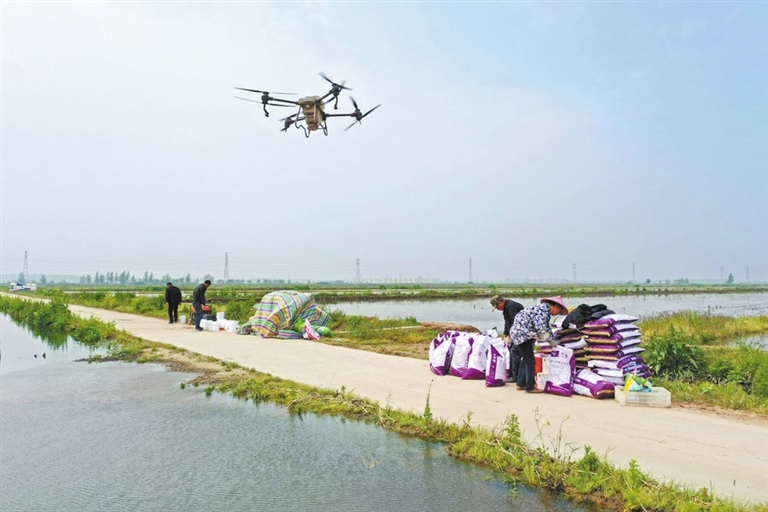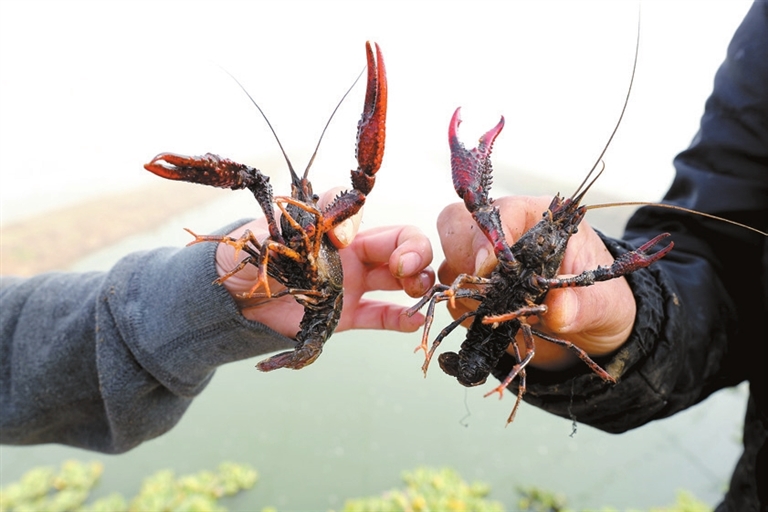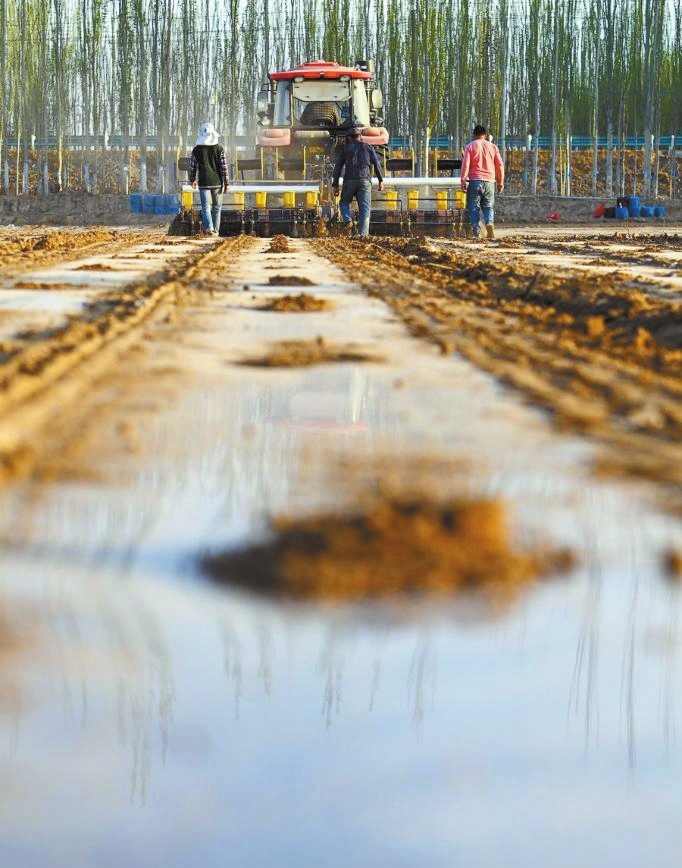


CHINA celebrated its eighth Space Day on Monday, with more than 400 exhibitions, lectures, competitions and seminars held nationwide. At the launch event of the Space Day of China in Hefei, capital of East China’s Anhui Province, the China National Space Administration and the Chinese Academy of Sciences released a series of Mars images obtained during China’s first Mars exploration mission. “The global images of Mars will provide a better quality base map for Mars exploration and scientific research,” said Zhang Rongqiao, the chief designer of China’s first Mars exploration mission. “It is an important contribution that Tianwen-1 has made to human’s deep space exploration,” he added. Technologies and products inspired by space exploration have been applied in various fields nationwide. Being a major agricultural country, China is transforming its agriculture with the help of its space undertakings to enhance productivity and increase farmers’ income. On a recent day, Chen Ping, a farmer in Susong County, Anhui Province, fed his crayfish using a drone. While farmers typically feed their crayfish manually on a boat, Chen skillfully flew his drone about five meters above the water, evenly spreading the feed. “The drone is connected to the homegrown BeiDou Navigation Satellite System (BDS), allowing it to fly automatically on preset routes,” said the 45-year-old. He added that using a drone not only saves time but also makes better use of the feed. With the help of another person to load the feed onto the drone, Chen can finish feeding the crayfish in 100 mu (about 6.67 hectares) of water area in just an hour. Otherwise, the task would require four people to finish in the same amount of time, using traditional methods. Susong, adjacent to the Yangtze River, boasts over 11,300 hectares of crayfish farms. The most time-consuming and arduous work of crayfish farming is daily feeding. Fortunately, drones have become a popular tool in large crayfish farms in the county, significantly easing the burden of farmers. Since its official launch in 2020, the BDS has been operating continuously, steadily, and reliably, providing powerful satellite navigation services. More than 100,000 agricultural machines have been installed with the BDS automatic driving system, covering such agricultural production processes as deep plowing, rice transplanting, sowing, plant management, weeding, harvesting, and drying, according to the China Satellite Navigation Office. Towed by a driverless tractor, a hill-drop planter moves forward and spreads corn seeds at a fixed spacing. As it gets warmer, Luo Junjie, a 31-year-old farmer in Qapqal Xibe Autonomous County of Northwest China’s Xinjiang Uygur Autonomous Region, is leading his team of 15 busy farmers. They mainly plant corn and wheat on about 533 hectares of farmland and have 13 sets of agricultural machinery. Equipped with the BDS, the team’s tractors and drones can operate automatically according to pre-planned routes. China has also launched several satellites for remote sensing, providing high-resolution images to monitor crop growth, soil moisture levels, pest and disease control as well as to predict crop yields. China’s space achievements have also played a role in producing better seeds. Through launching and retrieving an increasing number of spacecraft, China has successfully bred a variety of seeds in space, including grains, fruits, and vegetables, contributing to the nation’s food security. In 2013, the Academy of Agricultural Sciences of Fuyang City, Anhui Province, sent 100 grams of self-developed wheat seeds into space. After several rounds of field screening, the academy finally identified an excellent strain, which later won approval for massive planting in 2021. “Compared with previous varieties, the new one grows in a more predicted way, has larger ears of wheat and shorter stalks, and is more resistant to strong winds,” said Li Fuhua, Party chief of Yezhai Village of Fuyang City. Last year, the village planted the new variety on 266 hectares of farmland for the first time. The planting acreage of the new variety totaled 26,600 hectares in the autumn of 2022, covering the provinces of Anhui, Henan, and Jiangsu, said Feng Jiachun with the academy. Over 240 main grain varieties and over 400 vegetable, fruit, grass, and flower varieties have been approved to enter large-scale planting following more than 3,000 space breeding experiments. They have created direct economic benefits of over 360 billion yuan (about US$52.3 billion) with an annual increase of about 2.6-billion-kilogram grain output, according to an ongoing exhibition in Beijing on the achievements of China’s manned space program over the last 30 years. “With the completion of China’s space station and the regular launch of Shenzhou series of spaceships, we can carry out more plant cultivation, propagation, and breeding experiments in the country’s space station,” said Guo Rui, a space breeding scientist with the Space Science and Technology Center (Hefei). This will promote the sustainable development of space breeding and attract more scientists, breeding experts, and companies to participate in the cause, Guo said. (Xinhua) | 
